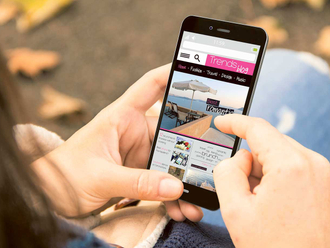
The Middle East’s advertising industry has had enough of talking up the slump in ad spending. For the first time in three years of sustained cuts, agencies are catching glimpses of hope.
The signs of these were visible in Q4-17, when advertisers signed off on increased media exposures, particularly in the prime-time markets of the UAE and Saudi Arabia. That was quite a bit of turnaround from the first three quarters of 2017, when overall spend was down by nearly 10 per cent from 2016.
And here’s the best part - the uptick in spend continued into January 2018. That’s the reason why Elie Khouri is willing to say an upturn is coming. Or at least insist the three-year downturn is coming to its end.
“We have hit the bottom - because if clients are going to cut beyond these levels, they will start hurting,” said Khouri, who as CEO of Omnicom Media Group MENA (OMG) oversees hundreds of millions of dollars that his clients spend on the various media platforms vying for audience attention.
“Advertisers’ market shares will be damaged if they cut more. Many overreacted to the market softening of the last two years.
“Clients had such high expectations of this region. If you didn’t have double-digit growth in Dubai and Saudi Arabia each year, then you were not doing a good job.
“But in the last three years, many marketers did not meet those expectations and reacted with extreme cuts in advertising budgets. But from here onwards, things are going to look up.”
There are other reasons prompting the flickers of hope for the ad industry… and by extension the region’s media sector as well. Public sector entities, those in Saudi Arabia and the UAE in particular, are in line to spend more on campaigns that explain the changes these governments are making in their interactions with citizens.
“Our overall results from last month are 20-25 per cent better than January 2017, and 2018 is going to be where things bottom out,” said Khouri. “The market is going to go up from there and in 2019 will naturally continue going up.”
But it will be a highly selective increase. The banking industry, entertainment and automotive could do well.
But the fast-moving consumer goods industry - the bellwether for consumer sentiment at any time - is unlikely to join in the cheer.
“FMCG will remain under strain for a while, because globally they are under pressure from cost cuttings,” said Khouri. “When they reduce their costs, they have less money to invest in marketing. And they are doing so cutting the number of (marketing services) vendors they work with or on the fee side.”
For 2018, Khouri believes spending on TV commercials will make a bit of a comeback, but the print medium will see no respite. Digital-related ad spending will continue its upward trek.
But as is the case elsewhere, the region’s ad industry too has to come up with solutions to fix the trust factor in digital. Not just a quick-fix, but a more permanent solution.
“We are shifting more towards performance (measurement),” said Khouri. “Before we used to book ads on the basis of CPM (cost per thousand impressions); now clients and us are working with the cost of acquisition/engagement. This is where the future of our industry will be.
“A lot of clients are already working with us on campaigns where performance is guaranteed. That applies to digital media across the board.
“If you are a car dealer running a digital campaign, you will only pay when it meets a certain target, say generate 20 test drives. If you are a hotel, you pay according to the bookings that are actually generated. It’s the same with airlines.
“But this performance measure has not yet trickled down to FMCG (campaigns). But you will see more of it as consumer goods increase their business over ecommerce platforms.”
Clients must decide what they do with VAT costs
That advertising clients are taking on higher costs as a result of VAT is a fact. But how they end up dealing with it could be quite varied.
“VAT is an inflation by itself… because you are adding a cost to the client on top of the media invoice,” said Elie Khouri of OMG MENA. “Clients, in the end, can deduct it back by passing it on to the consumer.
“But much depends on the categories the clients are in - some will try and absorb within their margins. At the end of the day, I don’t think there will be a great level of inflation because of the competition that is happening in the marketplace.
“In fact, clients and brands are trying to cut prices to gain more marketshare.
“At the end of the day, our fee is a small component of the media cost. The media cost is given by media owners. We negotiate the 5 per cent VAT increase - but it is going to be difficult in the cases of Facebook and Google. They are international platforms and they may not accept certain negotiations. But with other local publishers, it is much more convenient.”











